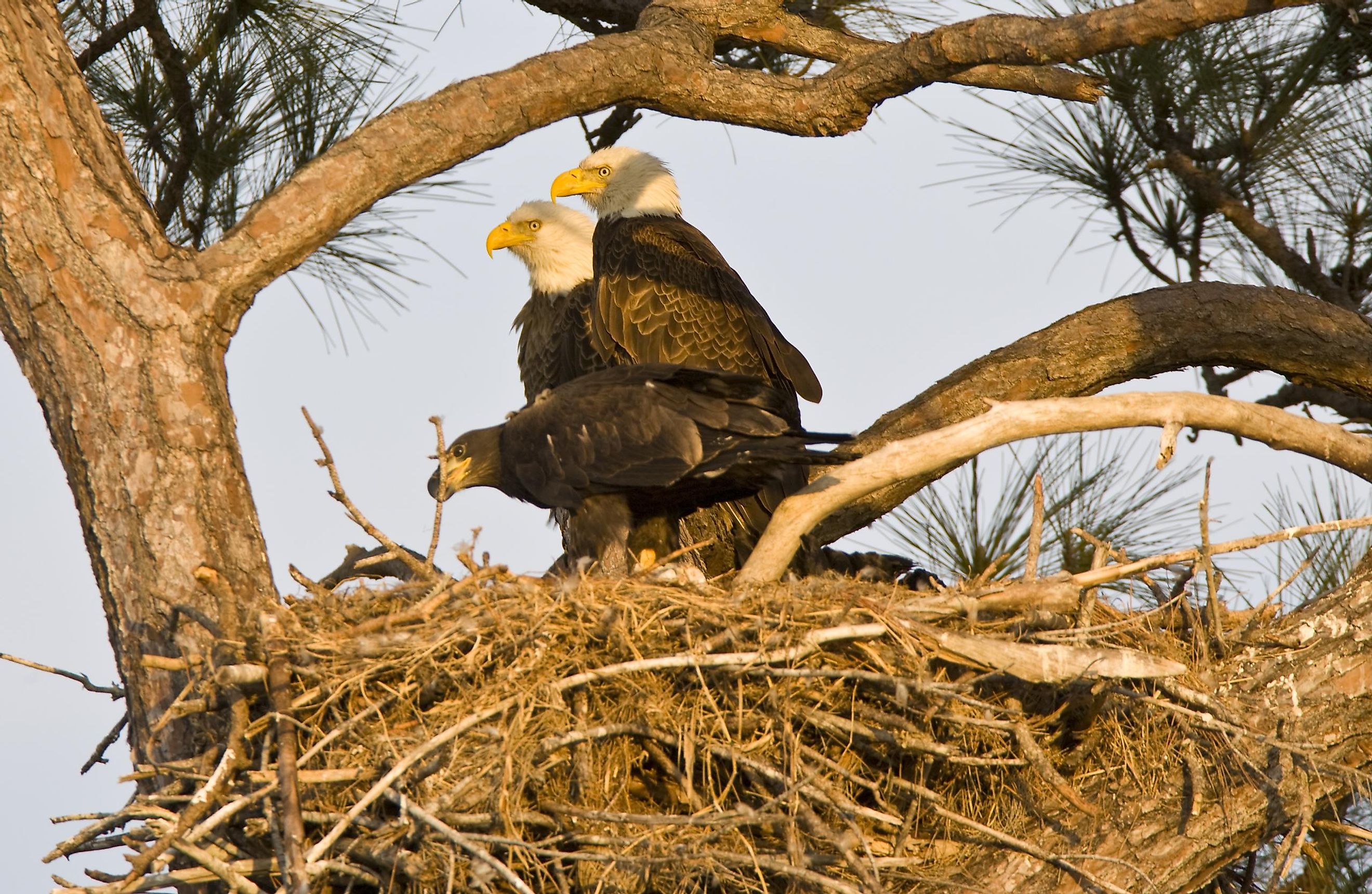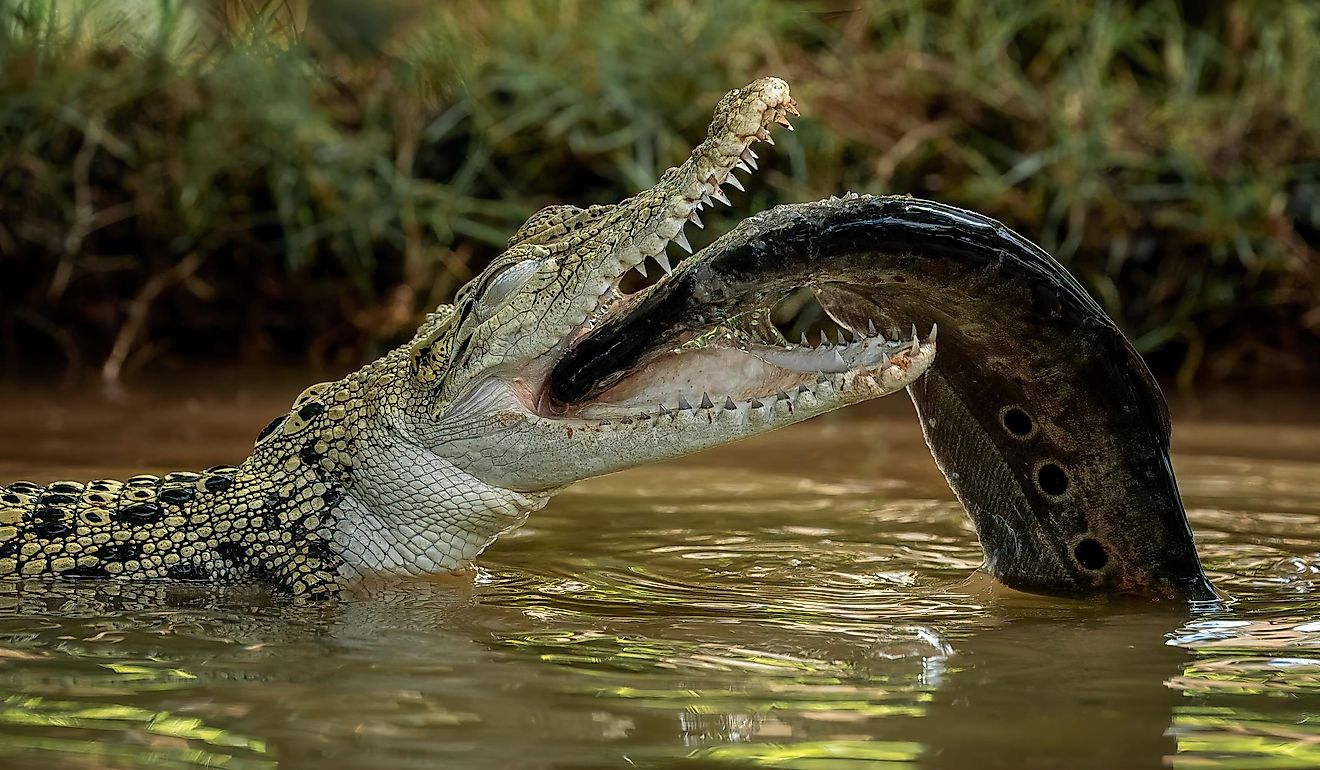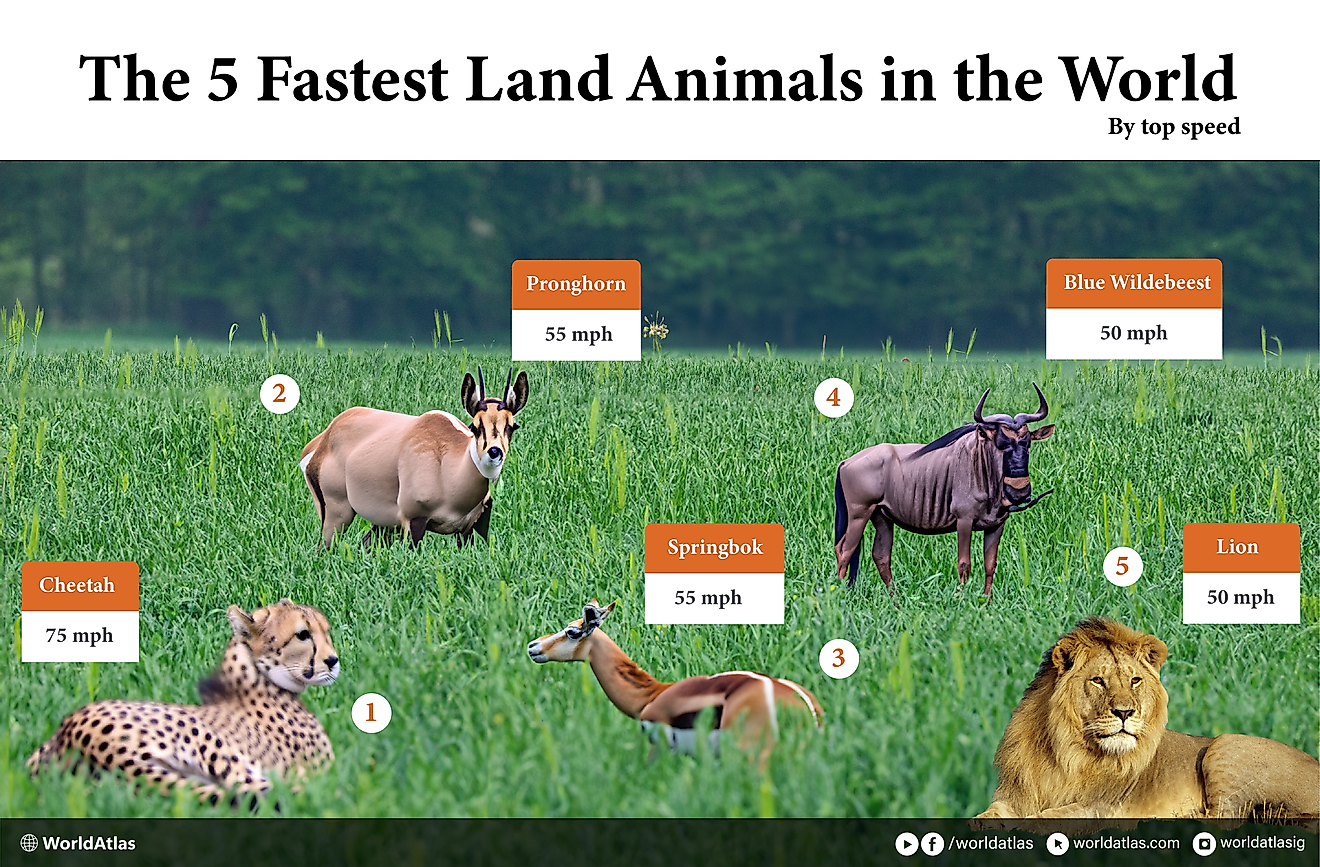
The Largest Eagles Found In The United States
Eagles are a source of great pride in the United States. The bald eagle is the national bird and one of the most iconic symbols of this unique and eclectic country. The golden eagle is another famous species that regularly soar the open skies of America and captures the attention of dedicated bird-watchers, casual national park visitors, road-trip warriors, and backyard barbecuers. Occasionally joining these two bold carnivores from abroad is the Steller's sea eagle and the white-tailed eagle. All four of these birds are impressively large and powerful apex predators. But let's dive in a little deeper and see who measures the longest wingspan and who most tips the scale.
America's Largest Eagles
1. Steller's Sea Eagle

Steller's sea eagles (Haliaeetus pelagicus) are a rarity in the United States, but individuals have flown into at least the states of Alaska, Maine, Massachusetts, and Texas. Typically, they hang out in Northeastern Siberia and migrate to Korea, Japan, and China during the winter. Because of their remote homeland, little is known about these amazing birds compared to the others on this list. Named after German naturalist Georg Wilhelm Steller, this species has an estimated wingspan range between 86 to 98 inches, a body length of 34 to 45 inches, and weighs anywhere between 13 to 20.9 pounds. This fact makes Steller's sea eagle, generally speaking, the largest of the Haliaeetus genus and the heaviest of any eagle species on the planet. They build their prominent physiques on a diet of fish, water birds, and small mammals such as foxes, minks, and domesticated dogs. Unfortunately, the global population is decreasing, and the Steller's sea eagle is classified as Vulnerable (VU) on the International Union for Conservation of Nature's Red List.
2. Golden Eagle

The golden eagle (Aquila chrysaetos) is the largest eagle species commonly found in the United States and the largest hunting bird on the entire continent, save for when Steller's sea eagles happen to visit. Not only is its size noteworthy, but its swiftness is also guaranteed to turn heads. The golden eagle is second only to the peregrine falcon in terms of raw speed. While dive-bombing its prey (such as rabbits, squirrels, prairie dogs, and even seals, bighorn sheep, and other moderately-sized animals), this species can clock upwards of 200 miles per hour! When at a cruising altitude, they can still hit a zippy 30 mph. Golden Eagles are usually spotted in Alaska and the Western U.S., but from a global perspective, they span much of the Northern Hemisphere. On average, these birds have a length of 27 to 38 inches, a wingspan of 72 to 96 inches, and weigh between 6 to 15 pounds. In captivity, one individual grew to be 27 pounds and sported a wingspan of 111 inches (or 9.25 feet)!
3. Bald Eagle

While not the biggest eagle to cross into U.S. airspace, the bald eagle (Haliaeetus leucocephalus) is certainly the most iconic. This patriotic beauty has almost identical measurements to the golden eagle but, on average, does have a slightly smaller wingspan and body weight. This species stands proudly between 28 to 43 inches, with a wingspan of 72 to 96 inches, and weighs in at 6 to 14 pounds. They can be found across most of Alaska, Canada, the contiguous United States, and Northern Mexico – typically gravitating to large bodies of water for feeding and old-growth forests for nesting. Though populations are currently healthy and growing, the bald eagle was almost driven to extinction in the very country that memorializes it. Along with being hunted en masse, the widespread use of chemical pesticides led to reproductive issues. Thankfully in 1972, DDT was restricted, and the population was boosted through reintroduction programs. Since then, the bald eagle has been upgraded from endangered to "Least Concern" (LC) on the IUCN Red List.
4. White-Tailed Eagle

The white-tailed eagle (Haliaeetus albicilla) is the Eurasian cousin to the bald eagle but has been sighted stateside on rare occasions – mostly on the Western shores of Alaska, but also New York. With a length of 28 to 35 inches, a wingspan of 79 to 94 inches, and weighing between 8 to 15 pounds, this raptor is Europe's largest eagle (generally found in Northern Europe, as far West as Greenland), and also one of the largest in Asia (flocking as far East as Hokkaido, Japan). Like its All-American peer, the white-tailed eagle can often be found near large bodies, catching fish when available or targetting sick or injured birds and small mammals.
The eagles of the United States use their formidable size to dominate their slice of the food chain. Save for the interference of humans (both accidental and intentional), these birds of prey can thrive in the great American landscape (or rather, skyscape), from the snowy realms of Alaska down to the deserts of the Southern states and Mexico. The golden eagle and the enshrined, rehabilitated bald eagle are near equals in girth, with wide local distributions, while the Steller's sea eagle and the white-tailed eagle are but occasional tourists to the land of the free.
The Eagles of the United States
| Rank | Species | Scientific Name | Wingspan (In) | Length (In) | Weight (LBS) |
|---|---|---|---|---|---|
| 1 | Steller's Sea Eagle | Haliaeetus pelagicus | 86 - 98 | 34 - 45 | 13 - 20.9 |
| 2 | Golden Eagle | Aquila chrysaetos | 72 - 96 | 33 - 38 | 6 - 15 |
| 3 | Bald Eagle | Haliaeetus leucocephalus | 72 - 96 | 28 - 38 | 6 - 14 |
| 4 | White-Tailed Eagle | Haliaeetus albicilla | 79 - 94 | 28 - 35 | 8 - 15 |







